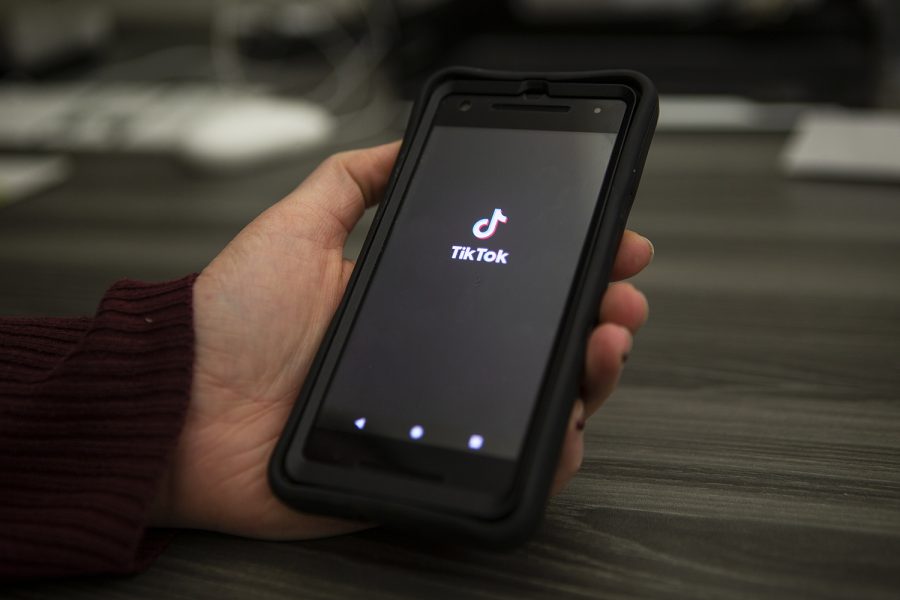In 2021, the short-form video application TikTok was named the most popular website on the internet, surpassing even the world’s most used search engine, Google.
TikTok has a billion monthly active users worldwide, and because of the app’s personalized algorithm, no two users’ “For You” pages are the same.
This election year, many classmates and TikTok users I’ve spoken to have noticed an increase in political content on the app. Influencers endorsed candidates, Vice President Kamala Harris and President-elect Donald Trump created their own accounts, and users became more involved in political discussions.
The 2020 election was characterized as the “Twitter Election” because users could livestream political events and receive up-to-date information on COVID-19. A record-breaking number of young people voted in that election, partly because their Twitter feeds were filled with debate over the candidates.
This year’s election could be considered the “TikTok Election” due to the volume of memes and election-related content originating from the platform.
One popular example was the Harris “BRAT” trend that took over TikTok. After singer Charli the artist’s energy.
Harris and her team joined the trend by posting Brat-themed memes on social media after Charli XCX publicly endorsed Harris.
One fan edit featuring Harris with Charli’s song “365” playing in the background garnered more than 4.5 million likes and 25.4 million views on TikTok.
While Harris embraced a fun, meme-driven TikTok strategy, Trump opted for a different approach, relying heavily on influencer endorsements.
Bryce Hall, a TikTok influencer with 23.7 million followers and 2 billion total likes, endorsed Trump and spoke at a rally in Las Vegas.
Leveraging influencers for political advertising is an effective way to reach younger voters. Influencers foster communities with their followers and know how to capture attention, making them valuable assets for advertising on TikTok.
The Federal Election Commission, or FEC, has not interfered with candidates collaborating with influencers but requires a disclosure if a candidate pays a social media company to boost posts.
While younger users are drawn to memes and influencer endorsements, older users are on TikTok primarily for news. Forty-one percent of users aged 30 to 49 say news is the sole reason they use the app.
Some users criticize the proliferation of fake news on TikTok because of the app’s lax fact checking. Others argue its informal, personal tone makes it a better source for news.
TikTok’s creators have openly discouraged posting political content, aiming to promote joy among users. However, algorithmic suppression and echo chambers can limit exposure to diverse viewpoints, keeping users within ideological bubbles.
After Harris announced her candidacy, thousands registered to vote, 80 percent of them aged 18 to 34. This demographic was the target audience for the Kamala HQ TikTok account.
While Kamala HQ succeeded in engaging young voters by staying relevant, the account could have done more to appeal to undecided voters.
According to a Pew Research Center study, 45 percent of TikTok users reported seeing political content on their For You pages. Although anyone can download the app, most users are of voting age.
Moving political discussions to social media has been inevitable since the creation of Facebook. Even though social media apps are marketed as fun and not as reliable sources of news, users have always used the platforms however they want, regardless of the original intent.
The question remains: What impact did TikTok have on the 2024 election?
While there is no concrete data linking voter results to the content users interacted with on TikTok, there is a possible answer.
The biggest impact TikTok had on the 2024 election was likely the social vote.
The social vote is the idea that people vote because it’s what their friends and social media followers expect them to do. For example, last year Taylor Swift posted a simple message on Instagram to her 272 million followers urging them to register to vote. The post included a link to the nonprofit Vote.org, and the organization said they received 35,000 registrations from her post alone.
Social media has the power not only to change people’s political beliefs but also to give them the confidence to make their voices heard by voting. If someone’s social media is flooded with pictures of their friends and followers sporting “I Voted” stickers, the likelihood of that person voting themselves increases.
TikTok may not be to blame for the results of the election, but it was instrumental in encouraging people to vote.



